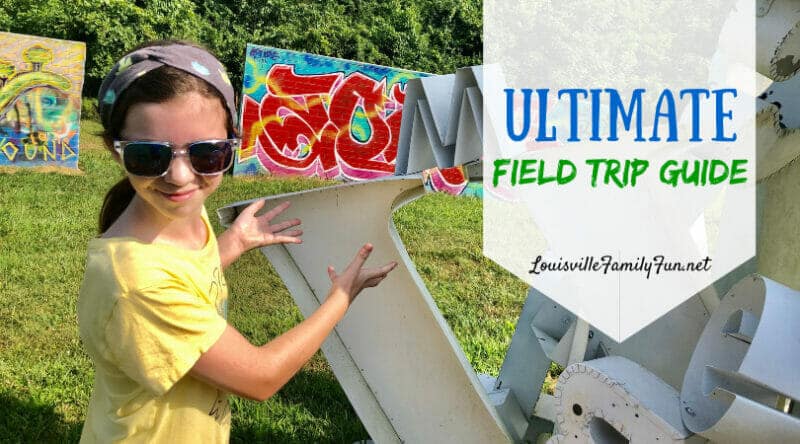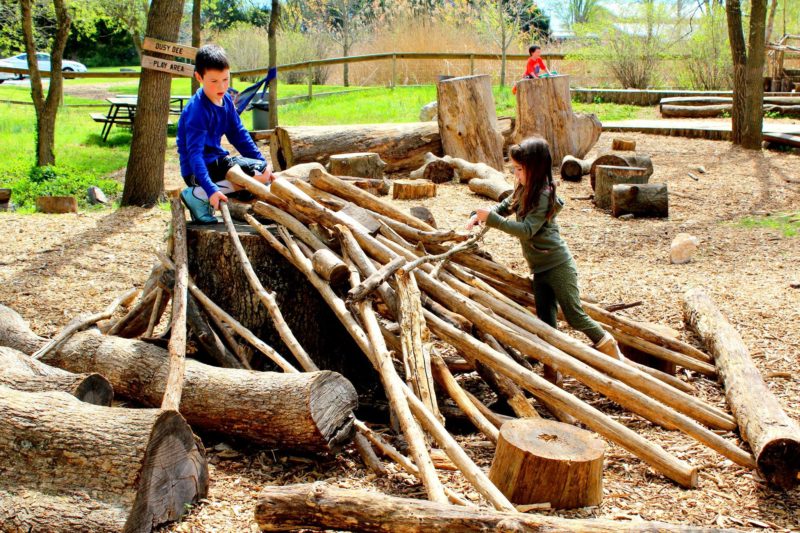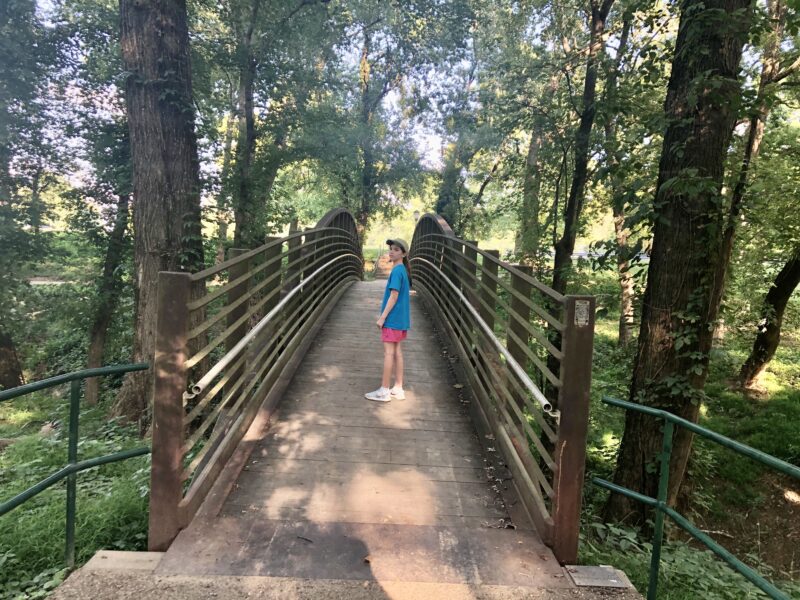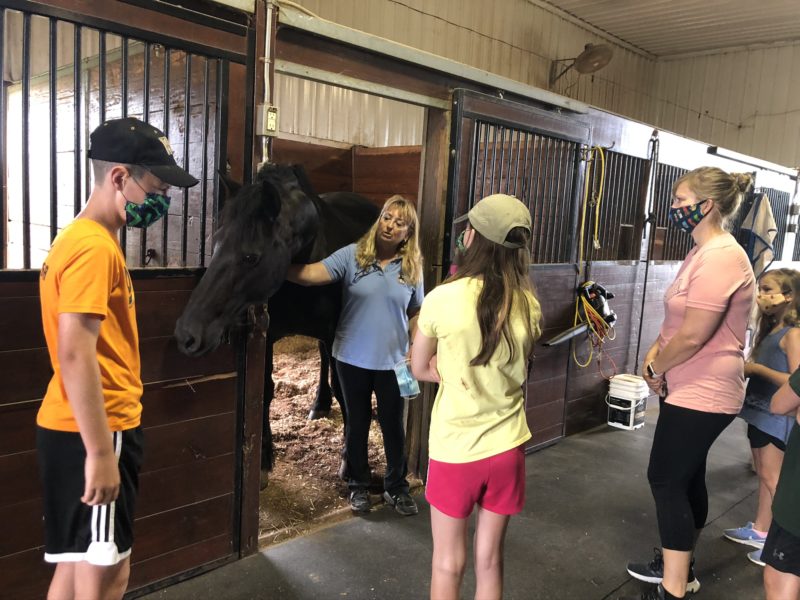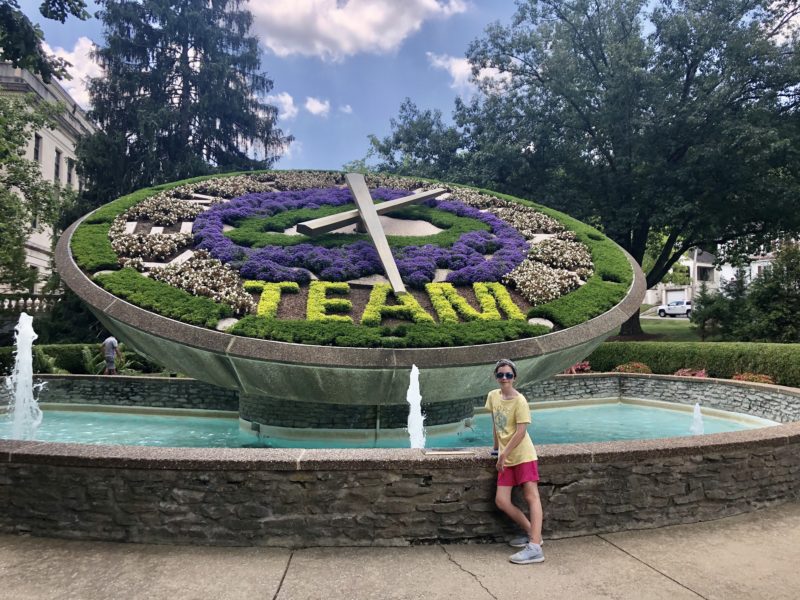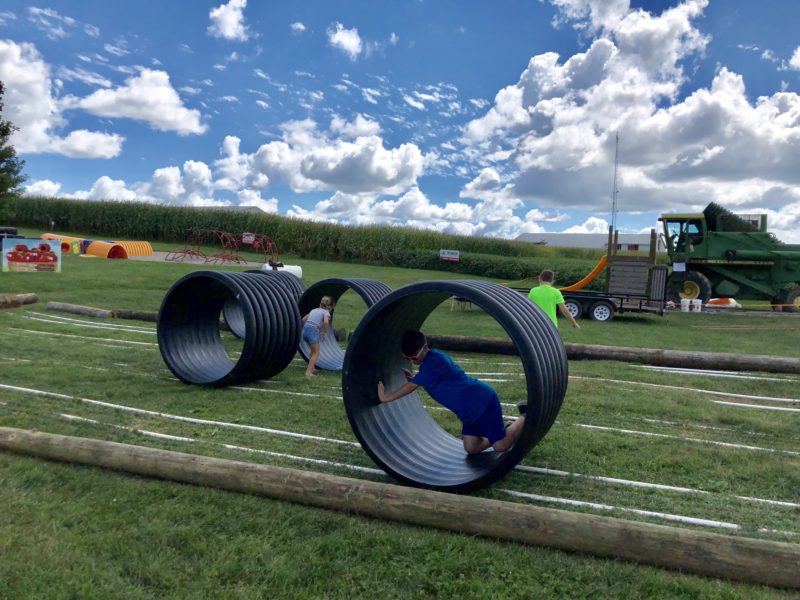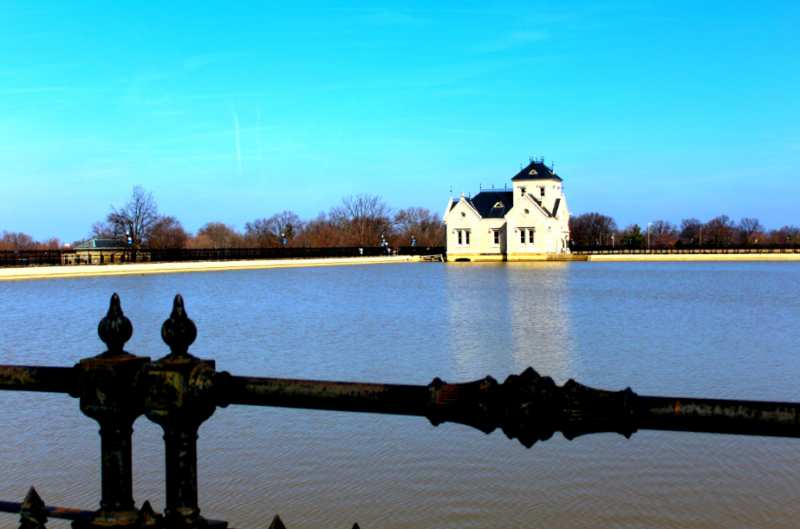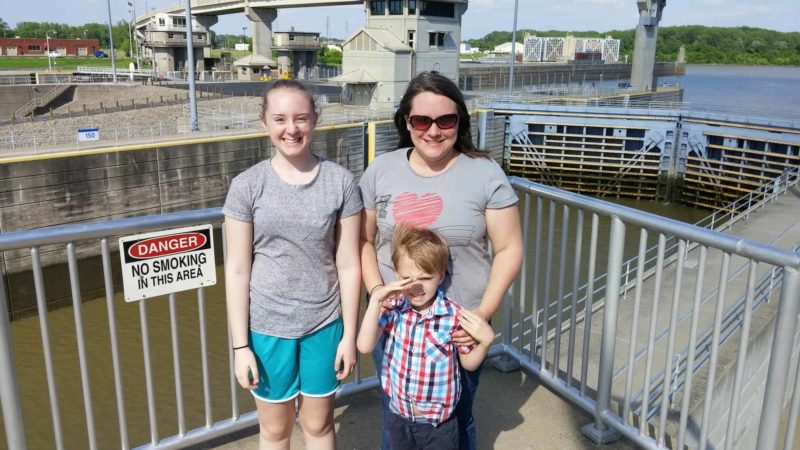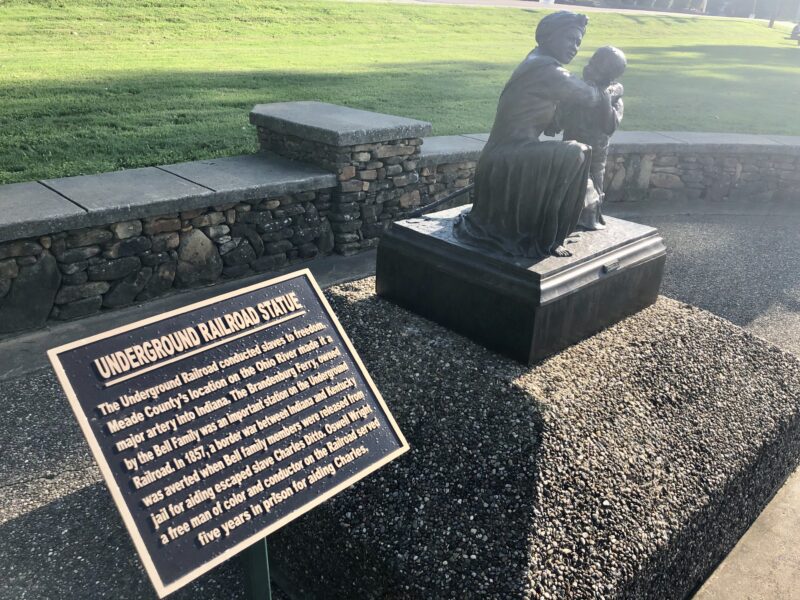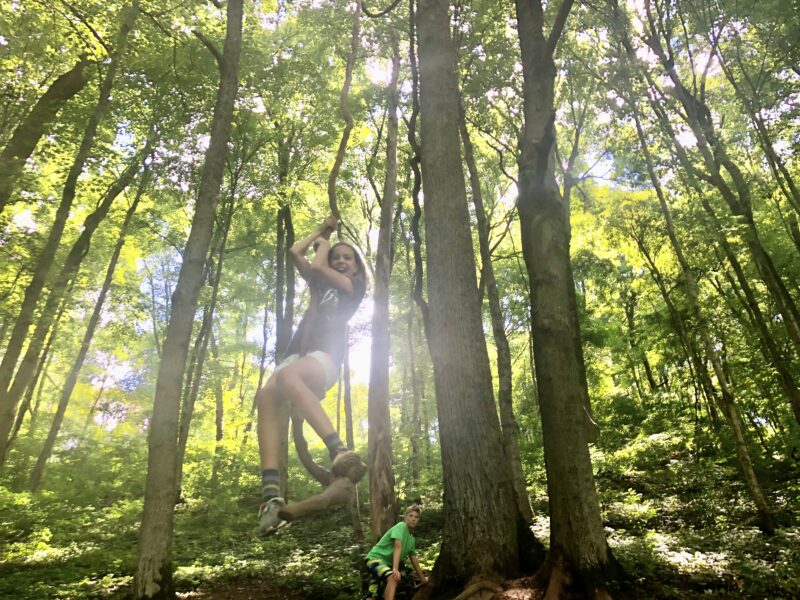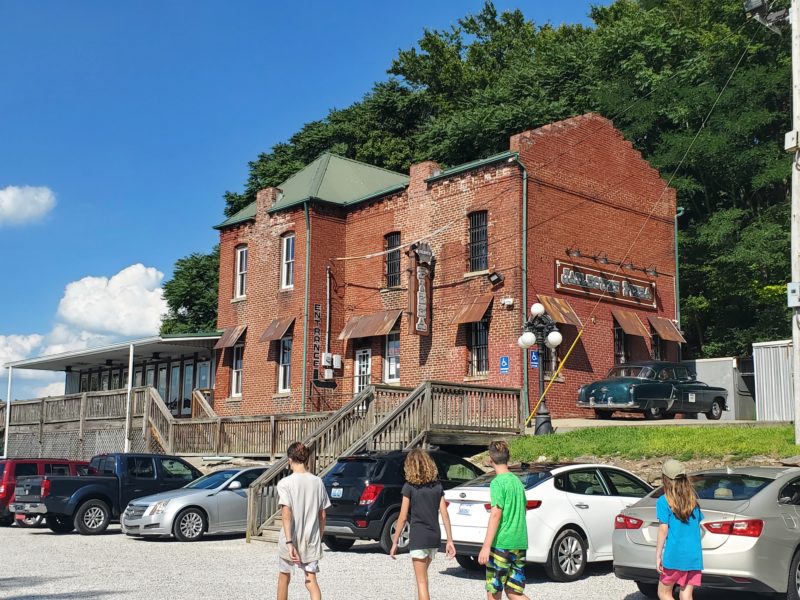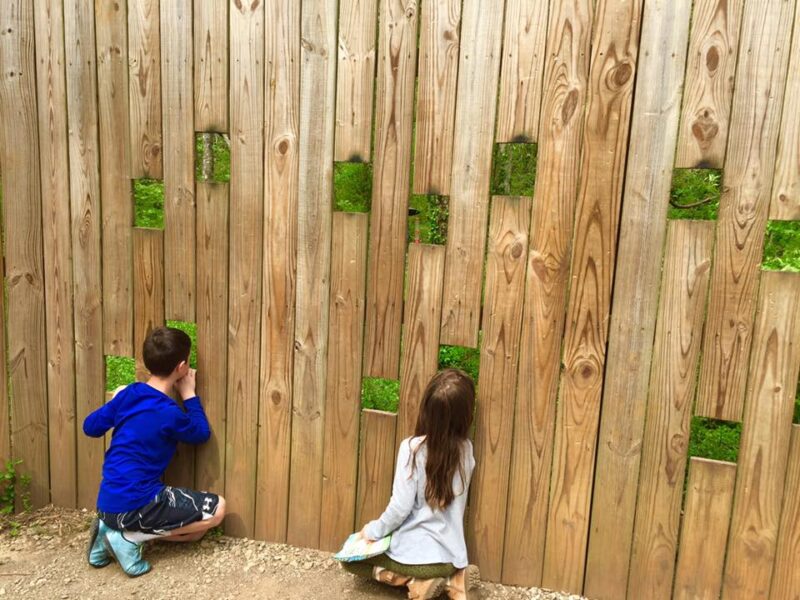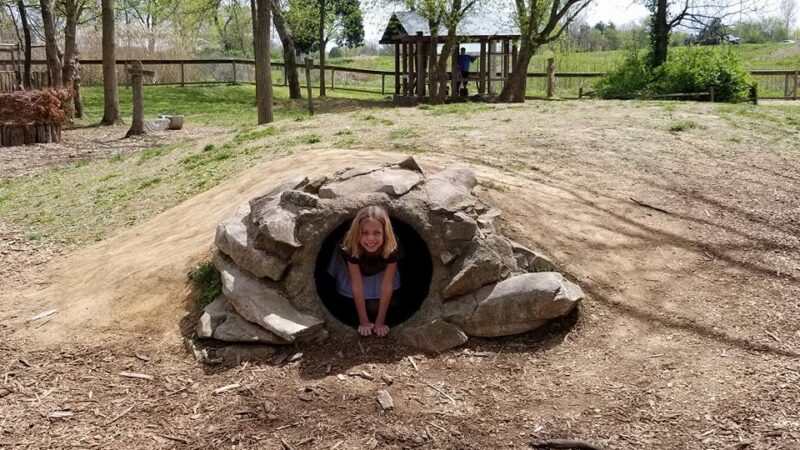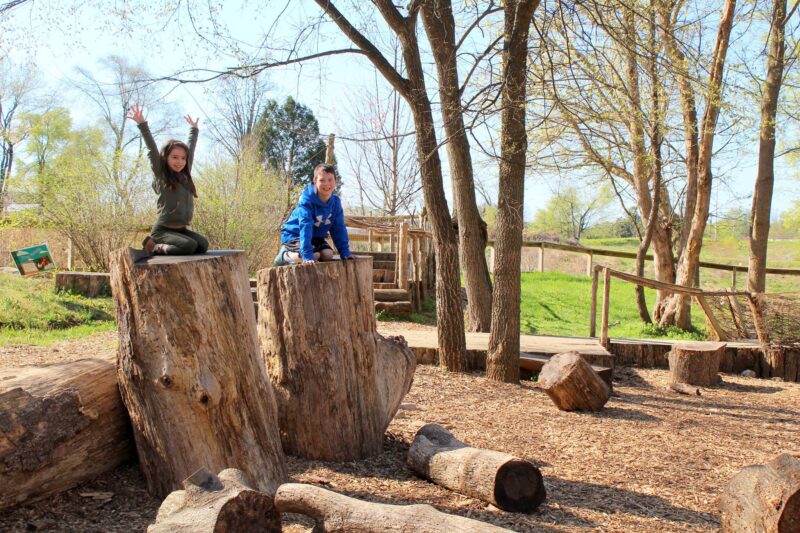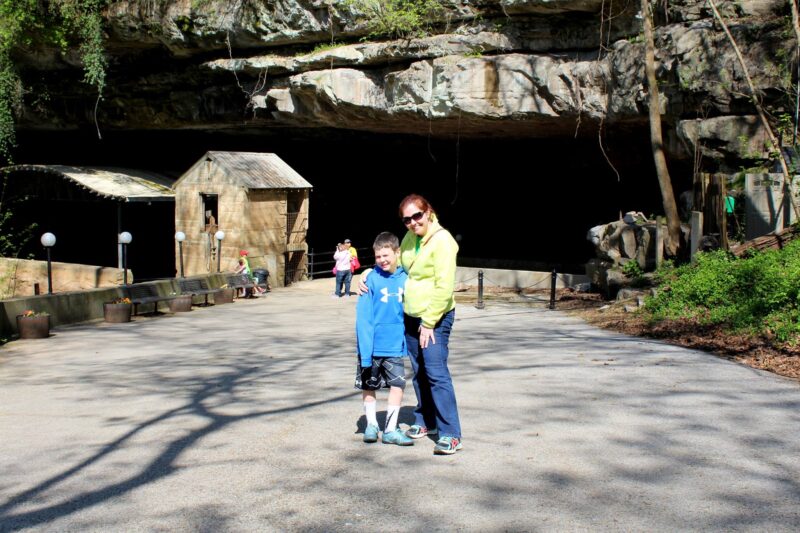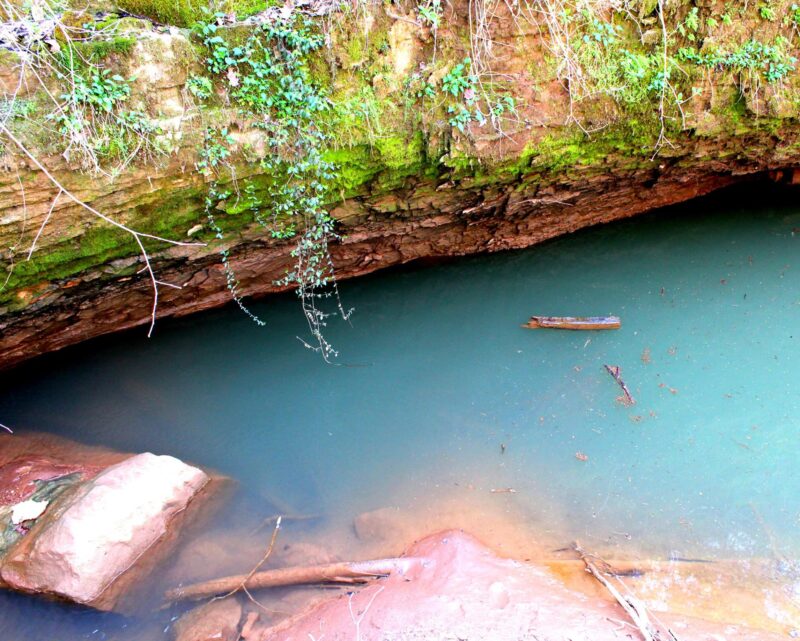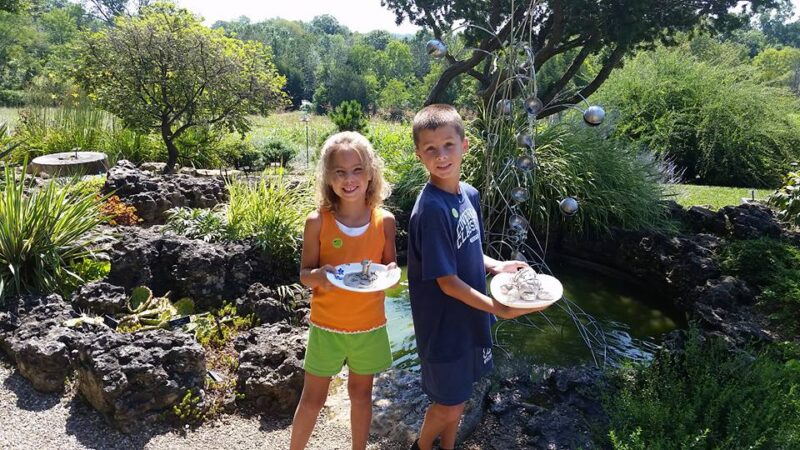Ultimate Field Trip Guide for Kentucky
Field trips in Kentucky can be a great way to enjoy our region with your family. And, involving learning in family fun allows kids to expand their perspectives.
What are the best field trips in Kentucky? Some of them are the hidden gems that are less obvious options.
Why not incorporate your family fun with learning opportunities?
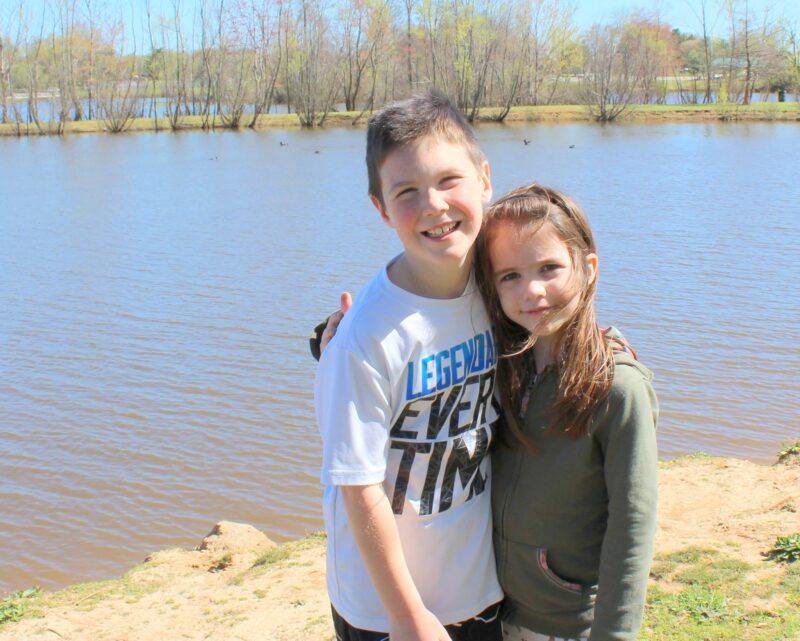
Field trips motivate kids to learn, and hands on education has a more long-standing effect than a traditional classroom lecture. Here are some in-state, outdoor, out-of-the-box field trip ideas to connect students to real-world learning and teach them lessons they’ll remember.
Even if you cannot take your kids on field trips in Kentucky during the week, they make for wonderful weekend day trips as well.
Best Kentucky Field Trips
Big Bone Lick State Historic Site:
Admission to the park (as well as museum and visitor center) is free to all visitors year round, and is open from dawn to dusk. Read more about it here. There are 4.5 miles of hiking trails with varying terrain and difficulty.
They just added some homeschool days that look great. Check out the link here.
There are nearly 40 acres of picnic grounds with tables and grills. The Discovery Trail begins at the Megafauna diorama behind the Visitor’s Center and continues along Big Bone Creek past interpretative panels regarding prehistoric drama that occurred in that area during the last Ice Age.
There is an abundance of wildlife along the trails, and the bison are perpetually viewable every day of the year. The park currently offers two, permanent orienteering courses.
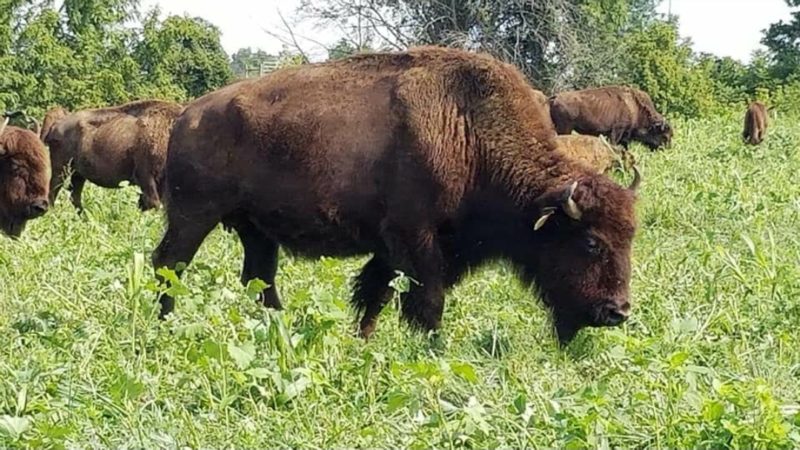
History: Research information on The Ice Age
Science: fossils, Orienteering Courses, wildlife, bison
Math: Guess how long The Discovery Trail is. How long would it take to walk it, run it, skip it? If a child started at one end of the trail walking 3 mph, and a bison started at the other end of the trail running 35 mph, where would they meet?
PE: 4.5 miles of hiking trails, The Discovery Trail
Art: Megafauna diorama; Discuss how animals are depicted in art
Black Horse Manor – Animal learning and farm tour
Black Horse Manor is in Shelbyville and such a lovely drive to get out there. You can book a private tour for up to 10 people so coordinate with another family and go together. You can designate what you want to learn about most. Read all about it on our post.
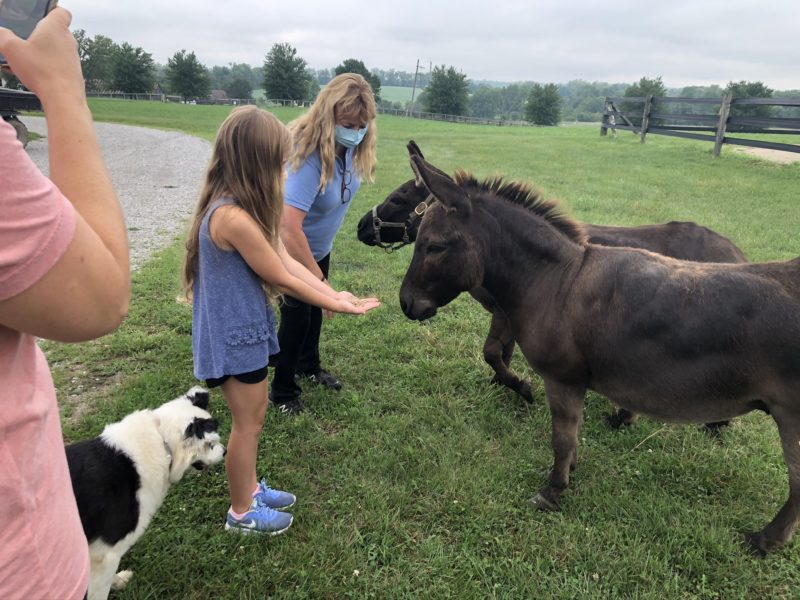
What’s also great about going to Black Horse Manor is that it is literally a two minute drive to Mulberry Orchard. The kids can get in all of the outdoor, active time in their play area plus learn about agritourism by visiting a local working farm. Again, all of the info is in our post.
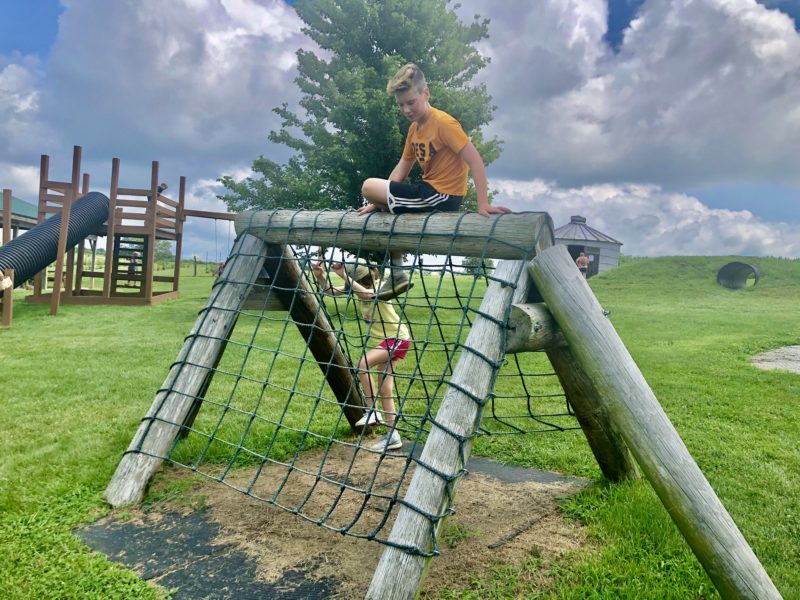
Enjoy this video to see more about this fantastic field trip idea.
Hodgenville, KY / Abraham Lincoln
On your way to Abraham Lincoln’s birthplace, as you drive through the center of Hodgenville, take note of the Statue of Abraham Lincoln. There are two bronze Abraham Lincoln statues in the town square, one of Lincoln as a child facing the other stature of Lincoln as an adult Arrive at the Abraham Lincoln Birthplace National Historical Park.

Walk up the steps to The First Lincoln Memorial, see a replica of the cabin Abraham Lincoln was born in, and hike down to the Sinking Spring. Feel free to bring a picnic lunch.
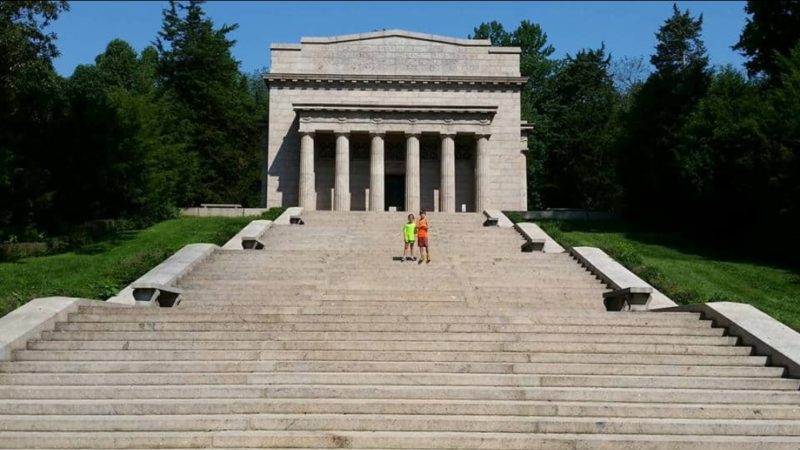
Then, visit Abraham Lincoln’s Boyhood Home at Knob Creek. Abraham Lincoln lived on 30 acres from when he was two until age eight. This is where Lincoln grew up, learned to fish, picked berries, almost drowned in the creek, and learned about African-Americans being sold as slaves. A quintessential part of great field trips in Kentucky.
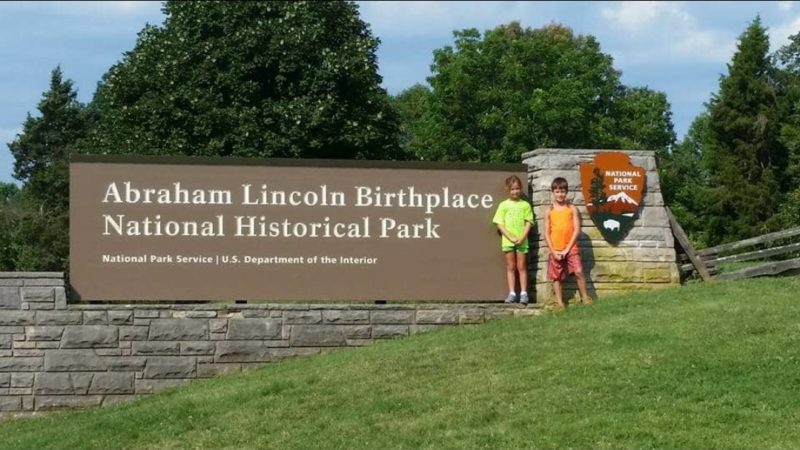
After soaking in all your history, stop by Hinton’s Orchard for a snack of healthy fruit, fresh baked good, or soft serve ice cream. Not only do they make seasonal ice cream flavors from their fresh fruit, they make homemade peanut butter, preserves, and salsas!
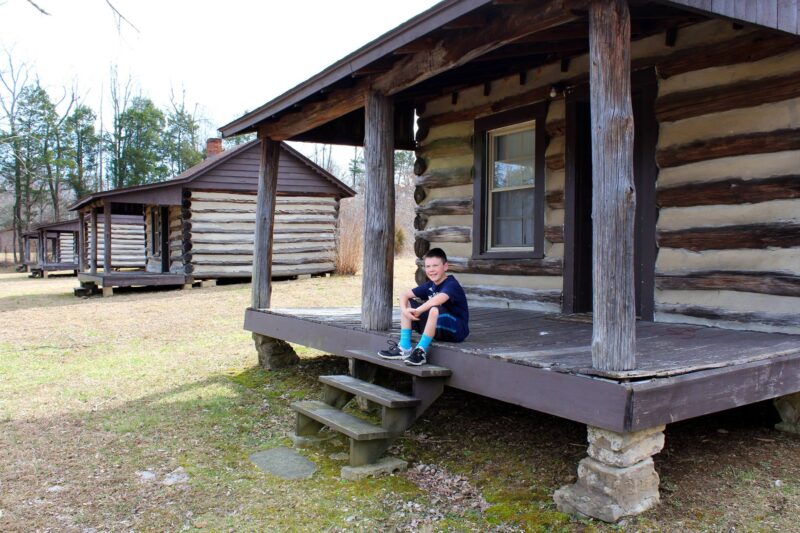
History: Lots of information on our 16th President. Research the symbols all over the site that reflect Abraham Lincoln’s life.
Social Studies: Discuss how family life would have been in a one-room cabin, what chores kids had to do back in the 1800’s
Math: Work with your kids to figure out how many presidents there have been since Lincoln. Pose questions about the length of presidential terms and estimate how many presidents there have been in their lifetime, your lifetime, their grandparents lifetimes. Are they correct? Practice counting by 4s and figure out the election years ahead.
PE: Walk up the fifty-six steps that symbolize Lincoln’s life. Hike down to the water source for the Lincoln family. Which muscles are used more when you are going up the steps?
Art: Research who sculpted the Hodgenville statues, what other statues they have sculpted. Discuss with your kids what the statues are made of and why, and what they think the sculpture wanted to convey by the looks on the faces of the statues.
Discuss the symbols designed in the Birthplace architecture (hint, count the steps, windows, and rosettes on the ceiling).
Science: Discuss how Sinking Spring drains through the subsurface and empties into a branch of the Nolin River. Discuss different types of water sources and what happens when people allow pollutants to encroach on our water sources.
Nutrition/Health: Look at the nutritional choices to combat obesity and chronic disease before or after your visit to Hinton’s. How can your family incorporate more fruits and vegetables in your diets? Which ones would everyone like to try next?
Fort Knox Area:
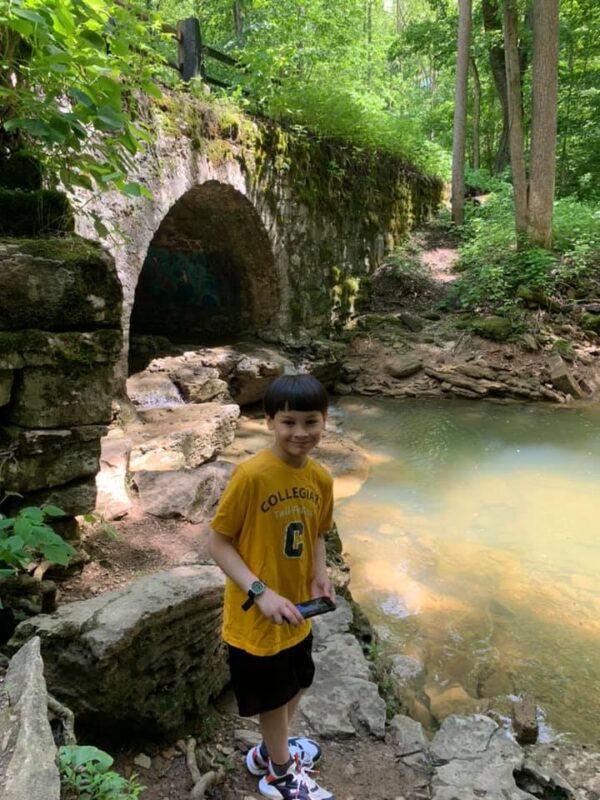
Bridges To The Past Walking Trail is a two mile paved path that follows the route of the old L&N Turnpike with 10 points of interest including three stone arch bridges.
Tioga Falls is a scenic waterfall located near Fort Knox. The less than two mile hike to the falls includes passing by some impressive railroad trestles. The falls are especially good after some rain.
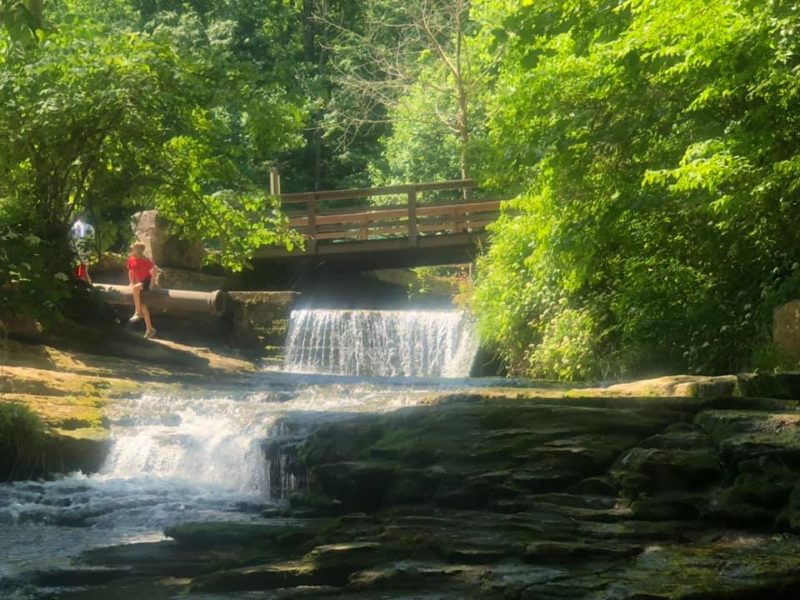
Saunders Springs Nature Preserve is a 26 acre heavily wooded natural area located on steep terrain with interesting historic features. There are three 1800’s vintage cabins. Two pavilions and picnic tables. The preserve provides opportunities for nature study, hiking, picnicking, and historic interpretation. Next to the nature preserve is a 73 acre tract called the Saunders Springs Annex which the city has leased and from Fort Knox. Both are free to enter and use from dusk to dawn year around, weather permitting.
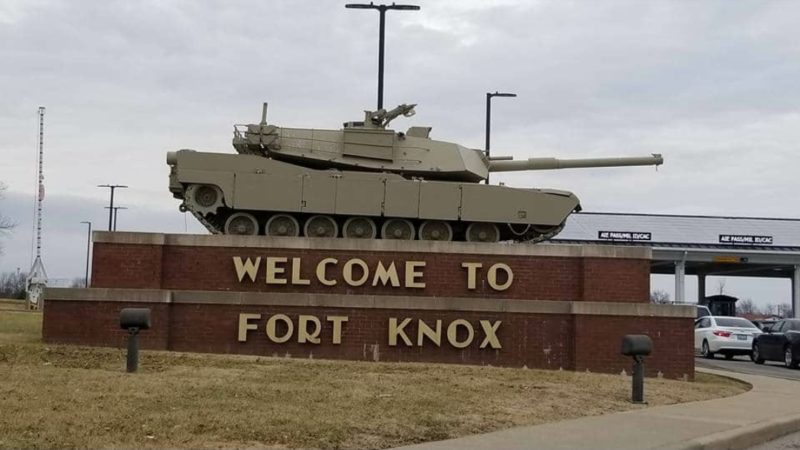
Fort Knox Armor Unit Memorial Park is located near the General George Patton Museum. It pays tribute to units that have served the United States in 20th century wars.
(tip: To enter Fort Knox, you need to have a valid ID, current vehicle registration and insurance). Definitely a must for field trips in Kentucky.
Another great field trip for this area is Brandenburg. You can spend the day near the Ohio River from another perspective. There are many opportunities to be active and learn. See this post on Buttermilk Falls, River Front Park, Jailhouse Pizza, and more!
Learn more about Kentucky’s connection to the Underground Railroad by watching this video to help lead discussions with your kids.
History: While you can’t visit the Fort Knox Bullion Depository, you can see it from a far. Research why when it was built, no visitors are allowed. Research the Presidents who have visited, and the last civilian who was allowed to tour the Depository.
Science: Do some research on the element of gold (Au), atomic number 79, and compare it to other precious metals.
Social Studies: Look at the cultural side of gold. It’s use in a variety of objects from the top prize in the Olympics to the subject of nursery rhymes like Rumpelstiltskin and Jack and the Beanstalk.
Math: What are the five biggest waterfalls in the world? Compare their height, length, and flow rate. What about in Kentucky?
PE: Hiking around these locations. On a paved path, use your phone to mark 100 yards and a 100 yard dash. How fast do Olympians run that distance?
Art: Take a sketch pad with you and try to sketch the railroad trestles, stone arch bridges, or vintage cabins. Discuss drawing three dimensional objects and the use of shading.
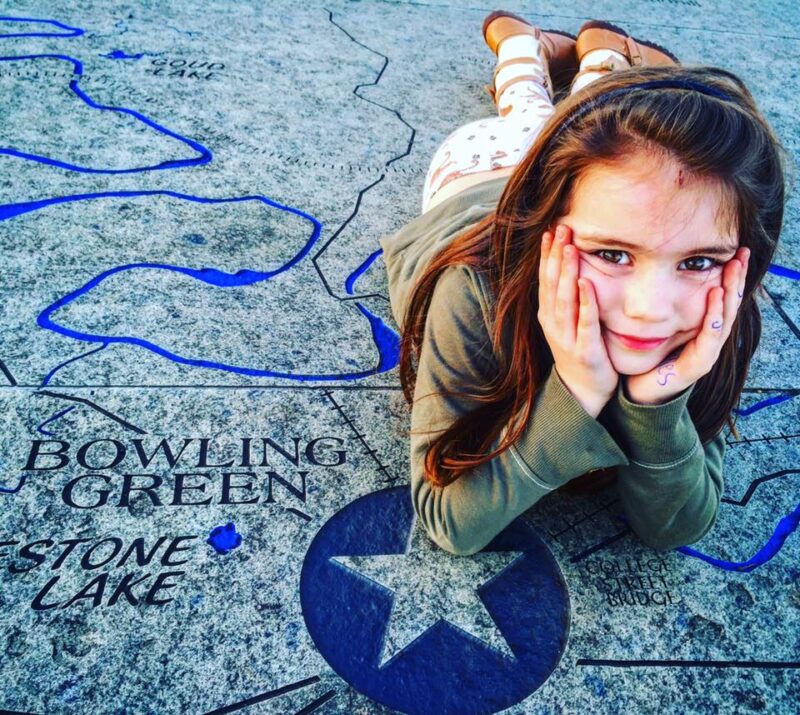
Bowling Green:
Basil Griffin Park contains a few great options. It is free and open to the public from 8am until dusk every day. Inside is Aviation Heritage Park which is an 11,000 square foot outdoor aviation museum. It contains multiple aircraft that honor aviators of the past. There is also a lake with fishing access, picnic shelters with grills, and a walking trail.
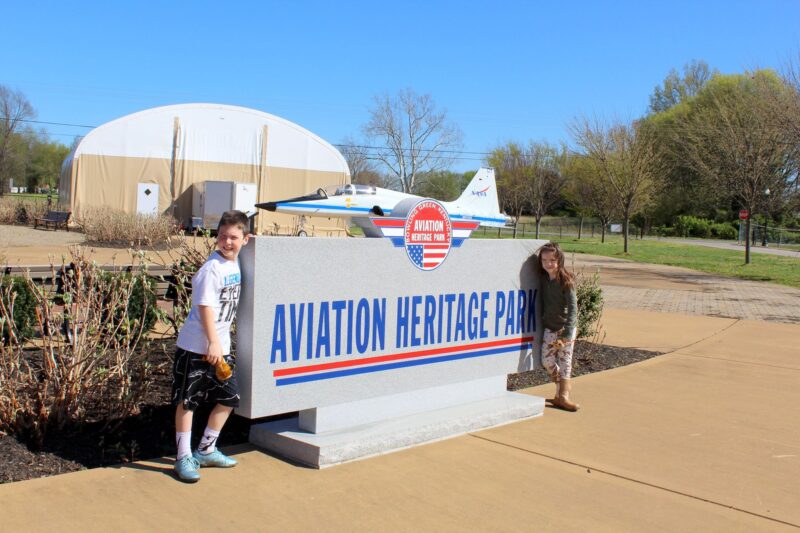
Fort Webb Park is a hidden gem so we think it would be great for field trips in Kentucky. Fort Webb is a Civil War historical site known as one of the numerous fortifications in Bowling Green used by Confederate States of America and Union Forces. When you arrive, you will be captivated by the stone terrain outlined with rich vegetation. There is a wooden stairway that leads upward to more of the park. From the top, Fort Webb Park overlooks miles of Bowling Green’s country side.
Dispersed throughout the location are park benches, perfect for a short respite. Shanty Hollow Lake Trail is a 1.3 mile moderate trail which features a lake which you can fish (don’t forget a fishing license for ages 16 and over) and native KY plants.
Lost River Cave is a favorite Bowling Green location and so perfect for field trips in Kentucky. Read this 12 Things to Know about Lost River Cave post before you go! If you don’t want to pay for a boat tour through the cave or a zip line adventure, you can stroll the grounds for free and your kids can play in the Nature Escape Playscape area by the gift shop where kids can use their imaginations to create a world of their own in nature.
There are nearly two miles of easy walking trails. You can explore the blue holes, limestone bluffs, and natural spring. Check out the remains of stone buildings that once stored dynamite used in quarrying the limestone, and watch the zipliners fly overhead.
Baker Arboretum is a hidden gem on the outskirts of Bowling Green, overlooking downtown. It has 115 acres of tree and art collections. There is no fee for admission. This is a small arboretum but very nice. The paths are easy to walk. Most of the main trees are labeled but not the annual plants. The sculptures are interesting to look at without needing to go inside the art museum, however, you may be the only ones in the small museum to view with social distancing.
History: At Aviation Park, read about the planes and history surrounding each plane and pilot. At Lost River Cave, take a cave tour and learn about how the cave was used in the past. It’s very interesting!
Science: Look into the science of fighter jets or caves. What allows a plane to fly? What can cause a cave? What animals can live in a cave?
Social Studies: How has man used caves from primitive times until now? Research caves in Kentucky and find three that are interesting and make a poster about them to present to the family.
Math: Compare the dimensions of the Lost River Cave to the longest cave system in the world: Mammoth Cave in Kentucky. Develop a graph of your analysis.
PE: Walking the locations above. Talk about hydration. When spending the day hiking, how many ounces of water should each person have in order to stay properly hydrated? What are some of the symptoms of poor hydration?
Art: Sketch some of the trees at the Arboretum paying attention to perspective. Look into cave paintings and recreate your own at home on a cardboard box (check out Cueva de las Manos in Argentina).
Music: Talk about the acoustics in caves. Why would singing be an efficient way to explore caves (think echolocation)? Look at the use of caves for musical venues.
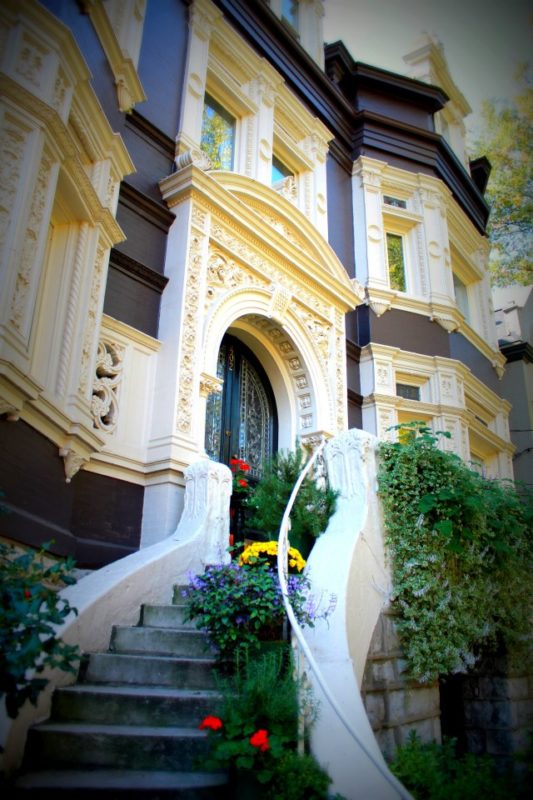
Old Louisville:
Self-guided tour around Old Louisville:
Louisville has the nation’s largest collection of preserved Victorian mansions, the highest concentration of residential homes with stained glass windows in the United States, and Old Louisville also features the largest collection of pedestrian only streets of any neighborhood in the United States.
We can’t pass this up for field trips in Kentucky. Old Louisville also contains Central Park, one of the great Olmsted Parks.

Old Louisville consists of about 48 city blocks. Be sure to check out Belgravia Court’s gas lights, St. James Court Fountain, Conrad-Caldwell House, the Pink Palace, The Witches’ Tree, and the home of Shakespeare in the Park.
Is Old Louisville haunted????!!!!
History: Old Louisville is on the site of the Southern Exposition, a five year series of world’s fairs held in Louisville from 1883-1887). Research more history on The Southern Exposition. What about Central Park? Who designed that park and why is he important?
Science: The Southern Exposition had the largest to date installation of incandescent light bulbs, which had recently been invented by Thomas Edison (who lived in Louisville in 1866-1887). Feel free to drive by Louisville’s Thomas Edison House in Butchertown on your way home from Old Louisville. Look into how lightbulbs work and other inventions by Thomas Edison.
Social Studies: Look into how people lived back in the 1870s when these houses were built. Host a tea party for your kids and have them make ruffled dresses with trains and top hats to wear during tea.
Math: Look for relationships between shapes and lines in the architecture. Find parallel and perpendicular lines. Identify right triangles and discuss why they are important. Are there other types of triangles you can find?
PE: Bring balls, frisbees, jump ropes, etc. to play with in Central Park in Old Louisville. Create challenges for each other.
Art: Talk about the different types of art seen at the St. James Court Art Show each year (painting, sculpture, ceramics, drawing, photography, jewelry, etc.) Bring sketchbooks and colors for the kids to draw their own interpretation of the fountain in St. James Court.
Paris:
Paris is located in Bourbon County, known as the Thoroughbred Capital of the World. Bourbon County has some of the most beautiful horse farms in the world, and is known for its thriving equine industry. Enjoy the drive through Bourbon on your way to Paris while exploring your field trips in Kentucky. (For a paid horse farm tour, visit Claiborne Farm where Secretariat is buried)
There’s history all over Paris. Check out this video from KET about the Paris Fire Department and then stop by and see if when you visit Paris for a field trip.
Paris, Kentucky has a 96 acre historic district. You can see early American architecture, rough-hewn stone walls, centuries-old wooden beams, ionic columns, a sharply-peaked cupola, and flower gardens and groves of stately trees. Paris contains the oldest standing tavern (Duncan Tavern) in Kentucky. There is a year round farmer’s market and a replica of the Eiffel Tower at the Welcome Center.
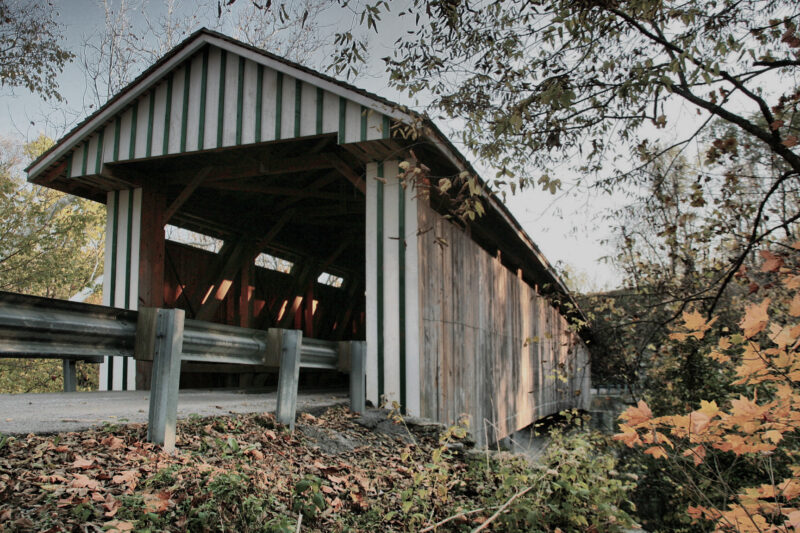
Colville Covered Bridge is one of only 13 covered bridges left in the state of Kentucky. The Colville bridge was built in 1877 in Bourbon County near Paris, Kentucky. It is only 18 feet wide and 124 feet long.
Check out Reed Valley Orchard for some healthy snacks or stay for a picnic. You can pick seasonal fresh fruits and walk their nature trail, check out the Stagecoach Trail where Jesse James once camped. Look for old rock fences and indentations from heavy buggy and stagecoach use long ago.
Another lunch option to check out in Paris is Trackside Restaurant. It is located in the fully-restored historic 1882 Paris, Kentucky Train Depot. Everything that isn’t original, was replicated. It’s said Teddy Roosevelt gave a speech at the depot. There is some outdoor seating.
History: Look into the history of Jesse James and Secretariat, see the video above. Why is Secretariat such a storied horse?
Social Studies: Discuss what life was like in Kentucky in 1880’s when the train depot and Colville Covered Bridge were built, and when Jesse James was a wanted outlaw. Talk about the use of carriages instead of cars.
Math and Science: Look at the construction of bridges. Bridges rely heavily on the mathematics and physics of stress and load. Discuss the four types of forces that act on a bridge: tension, compression, shear, and torsion. Discuss each type of force. Research how to make a covered bridge and have your kids try to make their own out of recycled materials.
PE: While walking around Paris and down Reed Valley’s trail, create a pattern together like: hop three times on one leg, do that with the other leg, walk backwards, do lunges with alternating legs and repeat. Make it your own!
Art: Look at some bridge art by famous artists: Monet, Munch, Brandeis, and Cole. How are they different? What do they have in common?
Lexington:
Ashland- Henry Clay Estate has 17 acres of outdoor learning with a self-guided tour of the outbuildings, formal garden, and walking trails available. The grounds are free to visit year-round. (Virtual FB tours). (Pay for indoor tours of small groups)
Waveland State Historic Park, also known as the Joseph Bryan Estate, has an antebellum house and three original outbuildings – slave quarters, smokehouse, and ice house. There is a short (.25 mile) trail where you can explore the old mill house structure, foot bridges, natural spring, and pond. Picnic lunches are encouraged on the property with picnic tables and charcoal grills provided. The grounds are open to the public year round from 8am until dark
Loudoun House is considered one of the largest and finest examples of Gothic Revival architecture in the state. The house was built in 1851 for Francis Key Hunt, and contains some really interesting architecture.
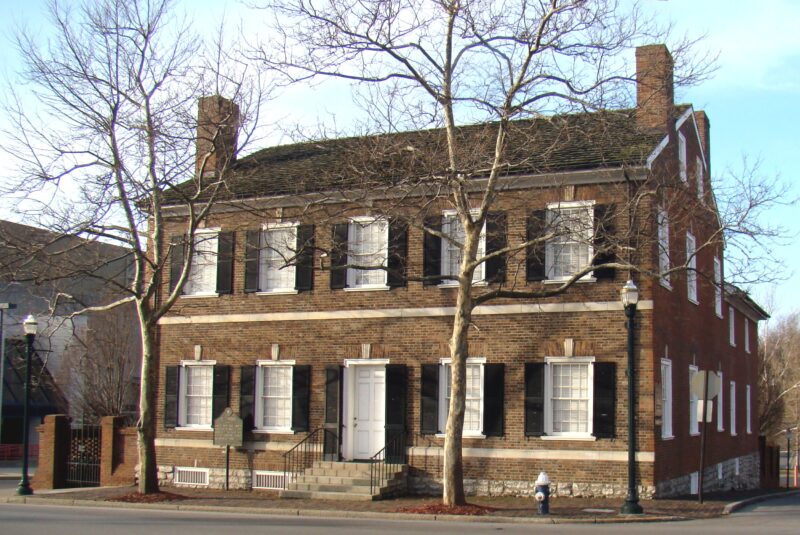
Mary Todd Lincoln House was the girlhood home of Mary Todd, future first lady and wife of the 16th President, Abraham Lincoln. Today the fourteen-room house is a museum containing period furniture, portraits, and artifacts from the Todd and Lincoln families. The museum introduces visitors to the complex life of Mary Todd Lincoln, from her refined upbringing in a wealthy, slave-holding family to her reclusive years as a mourning widow. This House does require a charge to enter, and staff are placed throughout the house to answer questions during your self-guided tour.
Lexington Cemetery (and Henry Clay Monument) is a nationally reputed garden cemetery and the burial site of many notable Kentuckians. The cemetery contains the remains of both Union and Confederate soldiers as well as veterans of the Spanish-American War. Notable Kentuckians who are buried in the cemetery include: Henry Clay, Kentucky’s famous senator and three time presidential candidate (Clay served as a United States Senator and Representative from Kentucky during the period of the War of 1812 up to the decade preceding the Civil War. Henry Clay was best known for his attempts to secure a compromise between the states on the issue of slavery). John C. Breckinridge, Vice-President of the United States under James Buchanan, and author James Lane Allen, as well as General John Hunt Morgan.
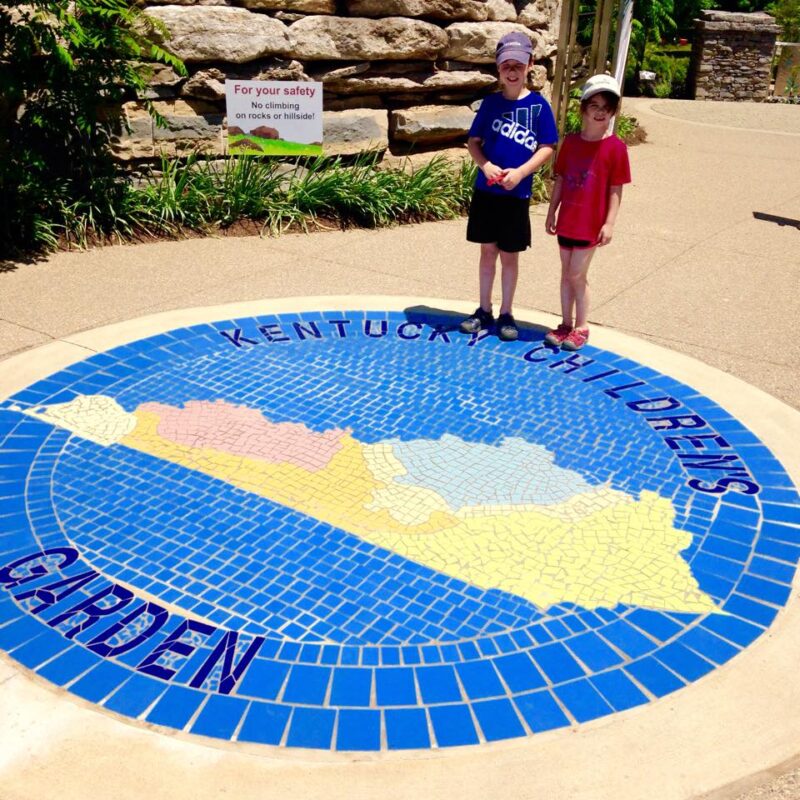
The Arboretum State Botanical Garden of Kentucky contains a large and diverse community of plants from around the globe. The gardens at The Arboretum are designed to stimulate your olfactory and visual senses, and are a contemplative place to observe the natural environment. The main grounds of the Arboretum are free and open to the public.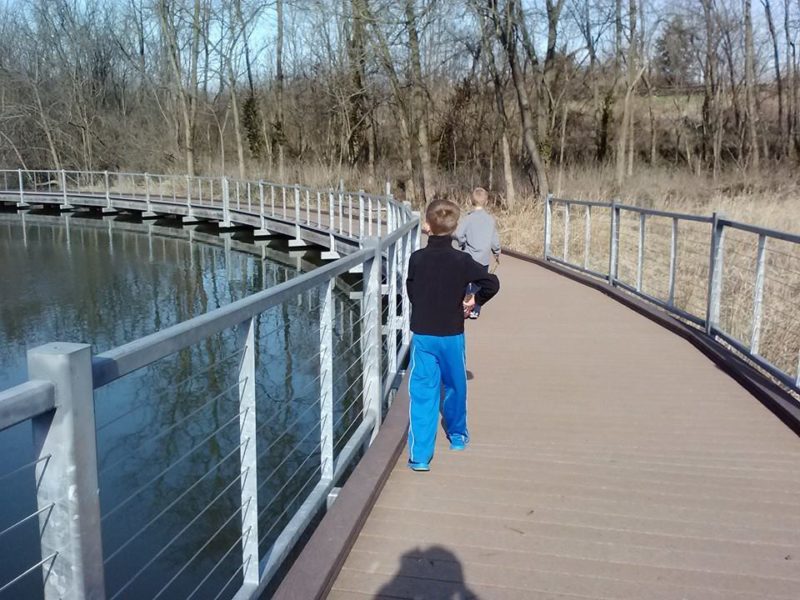
McConnell Springs Park is a 26-acre natural pocket within an industrial area. There are natural springs, the farm site (a gunpowder mill here supplied powder for the war of 1812), and a 250+ year old large Bur Oak tree.
Perryville Battlefield State Historic Site is the site of the most destructive Civil War battle in Kentucky. When considering the history of our state, this would make for one of the best field trips in Kentucky. The battle left more than 7,600 soldiers killed, wounded, or missing. This field has virtually been left exactly as it was in the 1862. You can take a self-guided walking tour on the battlefield.
KET has an electronic field trip! There is self-guided tour information in the box just outside the museum front doors. There are over 15 miles of trails that include history and nature, with over 40 interpretive signs. There is a picnic shelter and restrooms, picnic tables and grills. The park is open daily from daylight to dark. There is a small fee to enter.
Raven Run Nature Sanctuary is a unique, 734-acre nature sanctuary located just outside of Lexington. The park borders the Kentucky River and provides a great place for hiking and wildlife viewing. Ten miles of trails pass through meadows, woodlands, and streams characteristic of the inner Bluegrass. Historic remnants of early 19th century settlers can also be found throughout the park. Check the website for specifics on hours and restrictions.
History: SO much history at each location.
Science: Talk about the science of tree rings and years of growth. Research the wildlife and wildflowers seen along the trials and gardens.
Social Studies: Compare life in the 1800s with life in the early 1900s. What changes were made?
Math: Before setting off for a picnic, make some food to take with you at home. Include a recipe for dessert that involves measuring and converting measurements. If you go on a hike, track your distances and times to find rates.
PE: On one of the paths or trails, how far can you jump? Put two feet together and jump, measure the steps. How far to professional long-jumpers jump? If you change the way you jump, can you jump further? Why or why not?
Frankfort:
Josephine Sculpture Park (JSP) is an amazing location to walk around and look at art. It is free and open daily from dawn until dusk (they do have a donation box). There are about 70 works of art located on 30 acres. Bring something metal or organic to leave behind on the blue, dome sculpture, and bring something to paint or write with at Graffiti Hill to leave your mark behind. You can also bring picnic lunch or sign up for art classes that are held at JSP.

Follow the Historical Markers of Frankfort. There are many markers around Frankfort with lots of good information and history about our state.
While in Frankfort, eat lunch or made from scratch delicious treats at B’s Bakery, followed by a wide selection of ice cream at Hoggy’s Ice Cream.
End at the Capitol Building where you can download a copy of “Capitol Grounds Walking Tour Brochure” to end your day.
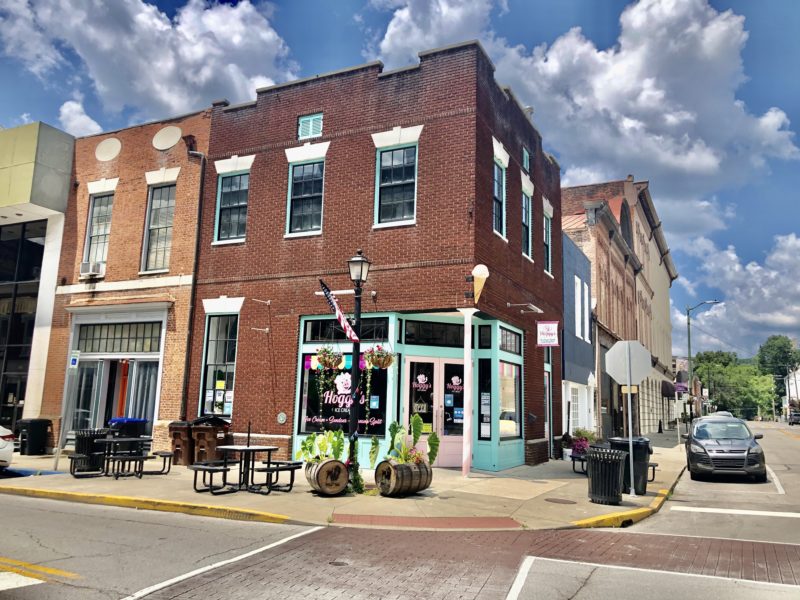
Social Studies: Look at the artists’ information listed on each of the signs by the artwork. Where are they from? Where are they now? Any similarities or differences? What is it like to be an artist and not have to go to an office building from 9 to 5?
Art: Research different types of art. Add your own art to the Graffiti Hill and the blue dome. Take photos of the sculptures at JSP and at home, use clay to recreate your favorite sculptures.
PE: Enjoy walking around the 30 acres at JSP. Do some important stretches before your hikes and talk about the important of hydration before, during, and after exercise.
Louisville:
Historic Locust Grove was established around 1792 and should be on all lists for field trips in Kentucky. Locust Grove is a National Historic Landmark on 55 beautiful acres. Locust Grove is the mansion and former home of Louisville founder, George Rogers Clark. They offer free audio tours. You can walk around all of the property and get a good history lesson.

Farmington Historic Plantation was a 550-acre hemp plantation in the 19th century and was the home of the John and Lucy Speed and as many as 57 enslaved black Americans. John Speed was a friend of Abraham Lincoln’s and Lincoln visited Farmington in 1841. The main house is has Jeffersonian-Federal style architecture.
The present 18-acre site also includes an elaborate early 19th century garden, stone springhouse and barn, cook’s quarters and kitchen, blacksmith shop, and remodeled carriage house. Self-guided tours of the historic 18 acre grounds are available daily form 9am to 6pm.
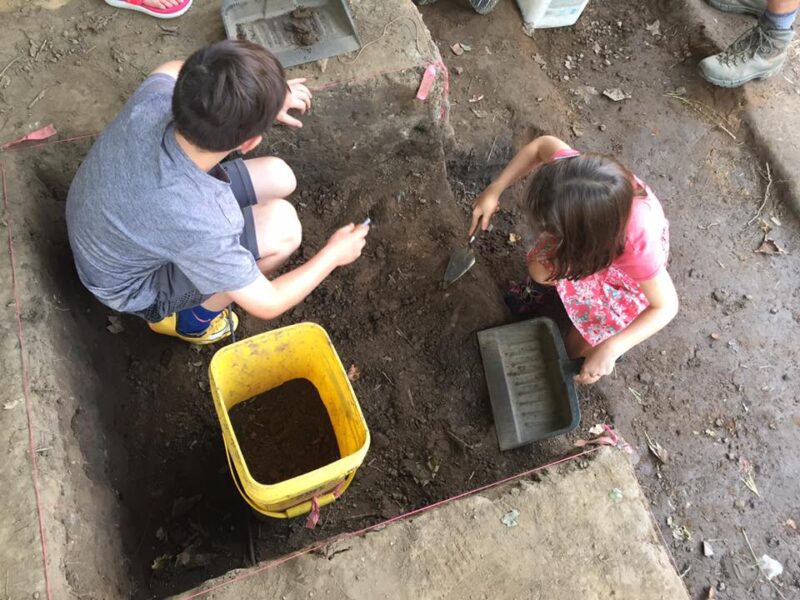
Riverside Farnsley-Moremen Landing
Riverside has a very rich and diverse archaeological history that includes the remains of 19th century outbuildings and prehistoric campsites thousands of years old. It is beautifully situated up on a hill on the Ohio River. Lovely for a day of learning and outdoor time.
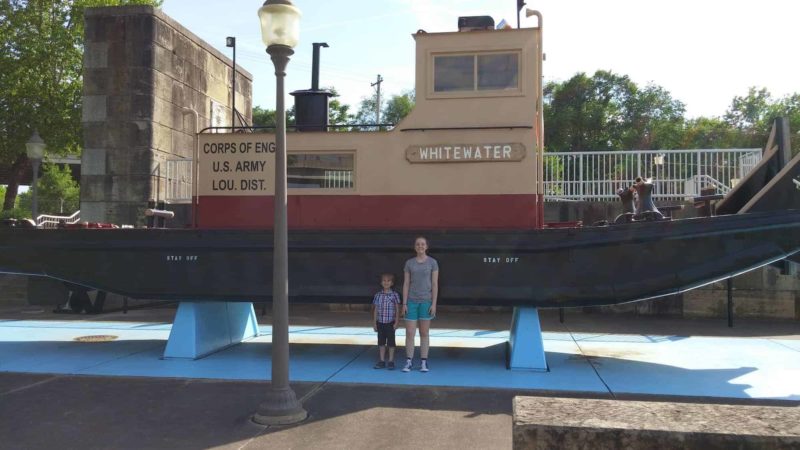
McAlpine Locks and Dams was constructed due to the Falls of the Ohio which made this part of the Ohio River impassable for boats. McAlpine was completed in 1830. It was originally 1.9 miles long, 64 feet wide, and moved boats up a total of 26 feet in lift. At the outdoor interpretive center, there are recorded audio messages – a self-guided tour – about the locks and dams, navigation and history of the area at kiosks along the cantilevered pavilion that extends out over the lock chamber. If you’re lucky, you may a barge passing through!
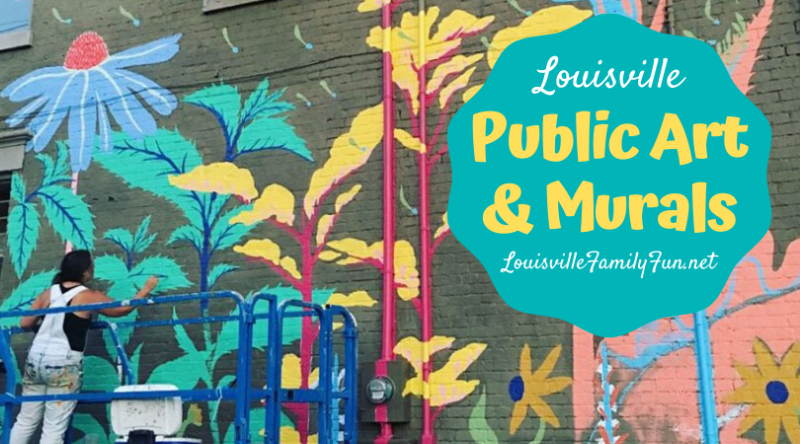
Murals and art to tour around Louisville can be seen for extra art education while viewing our amazing home town. And, this can be done safely from a car even on a rainy day!
War History around Louisville:
Start at Veterans Memorial Park of Kentucky in Crestwood, KY. This is a great little park with lots of monuments with amazing stonework and history. Feel free to pack a snack (or drive through one of the local fast food restaurants) and eat at a picnic table or under the gazebo. Walk through this little park for a history lesson on each of the major wars. Be prepared with more information on each of the major wars to add to the education. Feel free to bring an American flag that needs to be retired to drop in the flag box.

Then, head to Jeffersontown Veterans Memorial Park in Jeffersontown, KY. The Jeffersontown Veterans Memorial Park was the first park in Kentucky to be dedicated solely to veterans. It is located on 25 beautiful acres, there are covered picnic areas, green space for throwing Frisbees, and a shady nature walk along a creek. The walk of veterans consists of approximately 6,000 brick pavers and has a huey helicopter, an M-60A tank, navel guns, and a 60-foot bronze flagpole. There is also a natural walk path through a forest like setting along Chenoweth Creek.
History: Review the major conflicts and wars that the U.S. participated in. Are there any notable Kentuckians that you would like to learn more about that were involved in these conflicts?
Science: Talk about the science behind flying a helicopter which generates lift that overcomes its weight.
Math: Discuss the math involved with laying 6,000 brick pavers. What patterns do you see? How do they know how many bricks will fit on the path? Use the pavers like fractions or percentages to work out math problems.
PE: Play in the greenspace at Jeffersontown Veterans Memorial. Bring simple items from home to make obstacle courses for each other using the natural items at the park as well.
Art: Look at the detail of the monuments at Veterans Memorial Park of Kentucky. How are the wars depicted? How can art, like statues, impact how you visualize and view an event. Discuss how images wield the power to wound, to persuade, to ennoble, and to transport us through history. Paint rocks at home with patriotic themes and leave them at park to brighten someone’s day.
Nature Visits around Louisville:
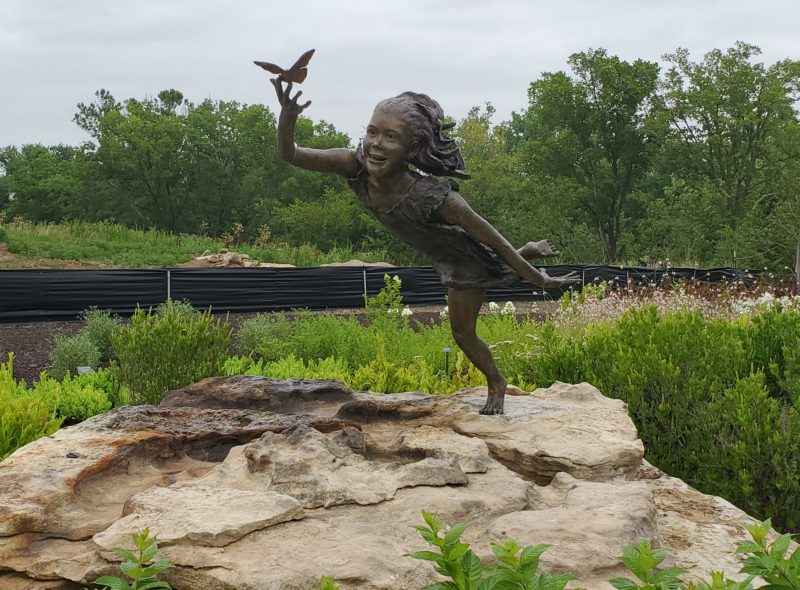
Waterfront Botanical Gardens is now open to the public on weekends with a free entry. You don’t have to go far to find great field trips in Kentucky. The Gardens are handicap/stroller accessible, and restrooms are available to the public. The Gardens are laid out with all plants and flowers labeled. This attraction is being built in phases, and is still at the beginning of the three phases with much to come. But already there is much to see and look at related to plants, flowers, vegetables, a waterfall wall, and sculptures.
Yew Dell Botanical Gardens is an internationally-recognized center of gardening, plants, and education that is located on the National Register of Historic Places. OldamFamilyFun.net has a very helpful post for you about 15+ things to do at Yew Dell. There is a charge to enter for non-members, but once inside, you can walk around 60 acres of gardens, trails, and sculpture.
Wolf Creek National Fish Hatchery is located in Jamestown, Kentucky, about two hours south of Louisville. It is located at the base of Wolf Creek Dam and beautiful Lake Cumberland. Visitors are welcome to tour the hatchery, fish the well-stocked creek below the hatchery, see the inner workings of an active honey bee hive, and meet Dale, the lifelike animatronic fish biologist.
You can complete a nature trail scavenger hunt or explore other nearby trails along the Cumberland River. Take the Nature Explorer Hiking Trail Hike or bike the 3⁄4 mile trail, experiencing a variety of habitats just outside the Visitor Center. Take the Nature Explorer Hiking Trail Hike or bike the 3⁄4 mile trail, experiencing a variety of habitats just outside the Visitor Center. Challenge yourself with the nature trail scavenger hunt. Check with the front desk in the Visitor Center for more information.
Historical Reenactment Sites:

Fort Boonesborough State Park is in Richmond, KY, about half an hour southeast of Lexington. Fort Boonesborough has been reconstructed as a working fort, complete with cabins, blockhouses, and furnishings. There are costumed actors reenacting 18th century life, demonstrating what life was like for pioneers in Kentucky. There is a small admission fee.
Ultimate Field Trip in Kentucky Tips:
1. Do your research before you go. If you’re going to a historical location, look up some of the history before you go or watch related videos on the locations’ websites.
2. Ask tons of questions when you are out and about. Make sure the questions are open-ended and not yes/no. Let the kids take notice and wonder!
3. Get creative: If you’re going to walk a bridge, don’t just walk, research how it is made, when, by who. Follow up by asking your kids to design their own bridge.
4. If you’re driving a distance to your fieldtrip, talk about what makes cars more or less aerodynamic and how that applies to gas. If you need to stop for gas, ask your kids how much they think 10 gallons of fuel will cost you at the price per gallon at the station your stopping at.
5. Go tech free unless the kids are looking up facts on where they are visiting. Always bring field books for reflections and drawing!
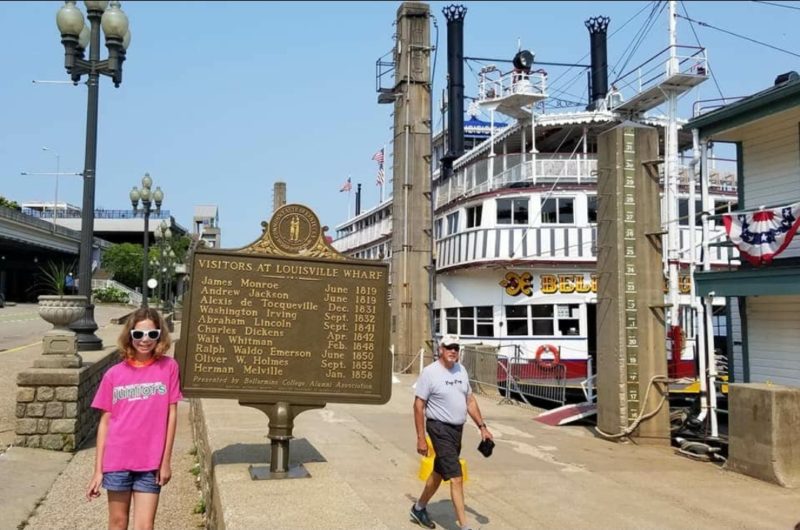
Additional {more obvious} locations for Field Trips around Louisville:
Falls of the Ohio fossil beds
Belle of Louisville history
Kayak, canoe, and boat rentals
Frankfort and the State Capitol
Speed Art Museum Louisville Water Tower & Crescent Hill Reservoir
Frazier History Museum
Kentucky Science Center
Louisville Zoo
Salato Wildlife Center
Waterfront Park and Big Four Bridge
Lewis and Clark Bridge
The Parklands of Floyds Fork
Blackacre Conservancy
Louisville Loop
Bernheim Forest
Red River Gorge Dinosaur World Kentucky Down Under Hiking Waterfalls


